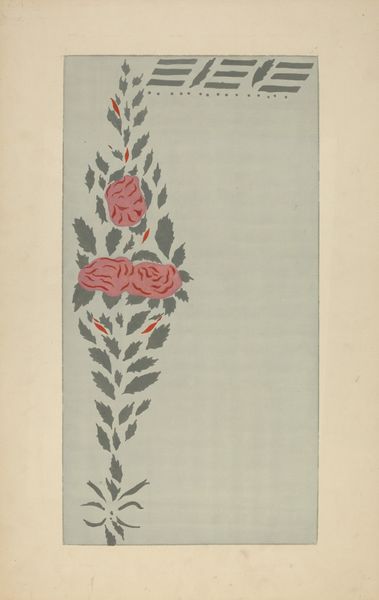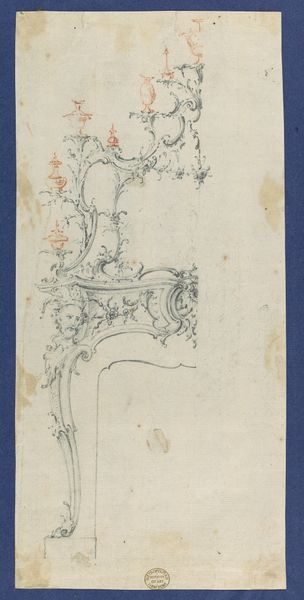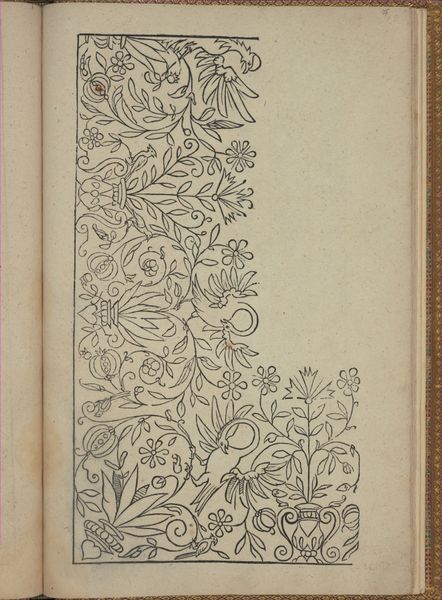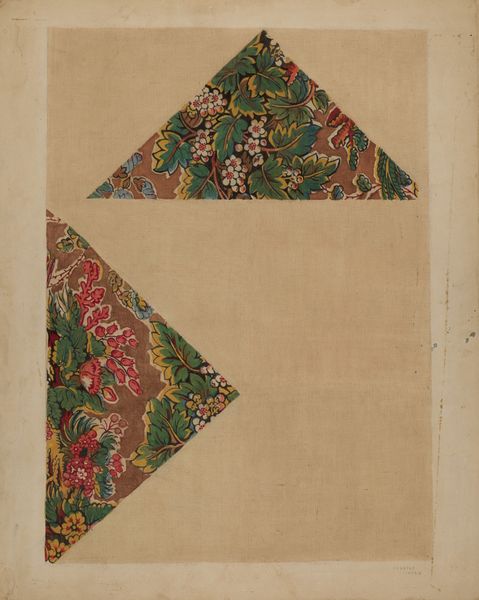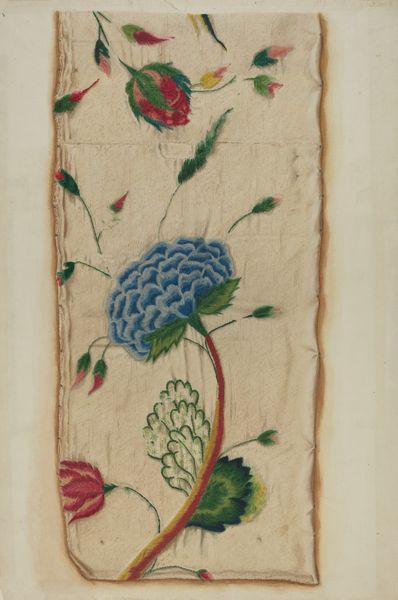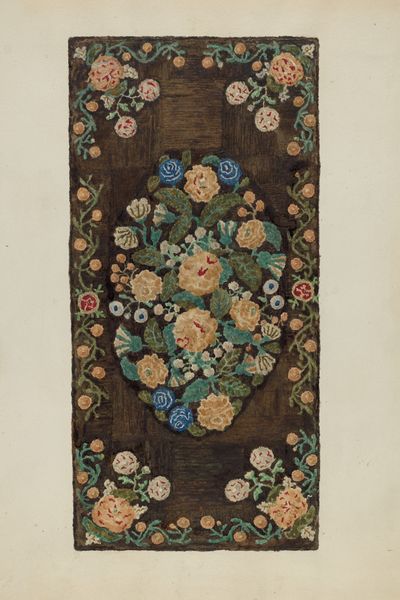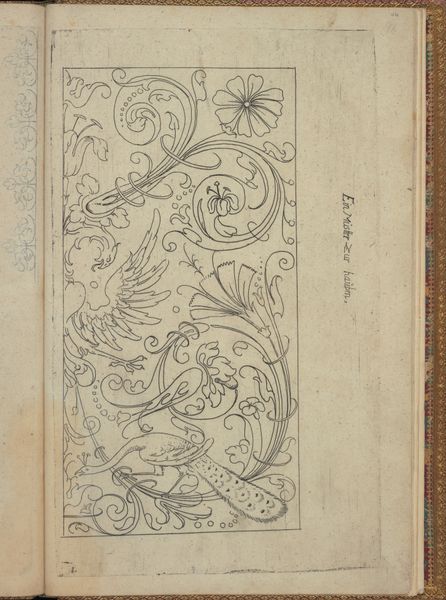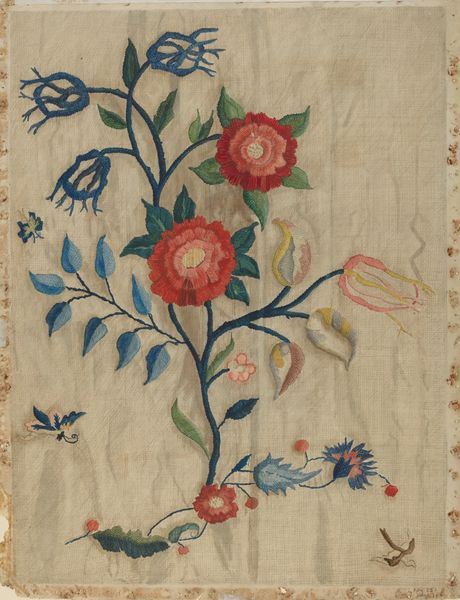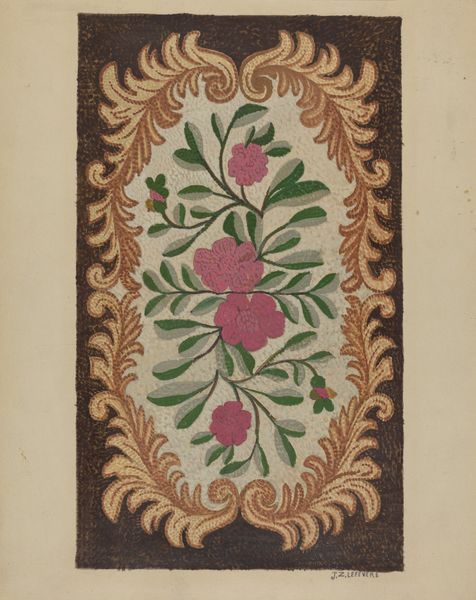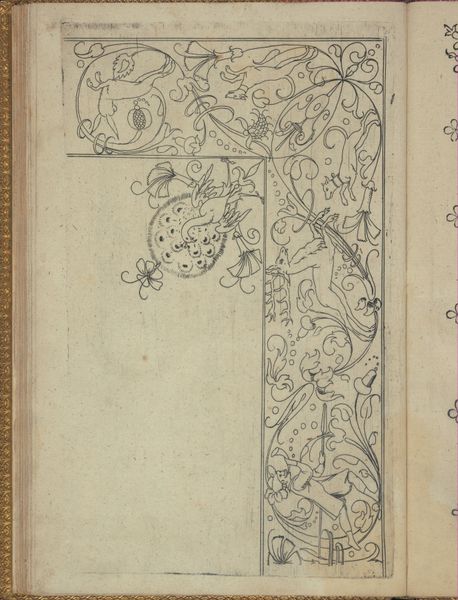
drawing, stencil, watercolor
#
drawing
#
stencil
#
watercolor
#
academic-art
#
decorative-art
#
watercolor
Dimensions: overall: 45.7 x 37 cm (18 x 14 9/16 in.)
Copyright: National Gallery of Art: CC0 1.0
Curator: So, before us is Ray Holden’s "Wall Stencil (Section of)," a watercolor drawing, likely from around 1937. What are your immediate impressions? Editor: You know, I get this wistful feeling. It's like catching a glimpse of wallpaper in a forgotten room. There's something lovely and melancholic in that crumbling effect, with roses hanging on. Curator: The depiction of decaying structures speaks to the socio-economic context of the late 1930s. This stencil offers us a view into the aspirations of interior design, particularly within working-class homes, where simple, repeating patterns like this brought elegance into spaces marked by hardship and austerity during the Great Depression. We have to keep in mind how limited choices were during this time. Editor: Hardship and roses... an odd juxtaposition. I like it though. I suppose even back then folks were looking for an escape in their surroundings. This stencil suggests someone yearned for something prettier to look at. Maybe this type of artwork provided hope during a bleak era? Curator: Exactly. And the academic art style hints at an effort toward refined taste even with limited resources. Decorative art played a crucial role. The cracks in the wall, immortalized within the work itself, almost seem to narrate stories of resilience. And by virtue of its age, we understand a lot about the material limitations for artwork during that period. Editor: Yeah, the cracks – they’re not a flaw, they are part of it. It’s as though it's whispering secrets. The grey palette, offset by faded red roses… they are beautiful but not flaunting it. Modest. Curator: Considering the broader themes of identity formation and societal pressures in a period marked by great division, this artwork can be seen as representing resistance, as well. The flowers against the bleakness. Editor: It is kind of sad, in a sweet way. To see something beautiful holding on in something ruined. What do you think its broader resonance is today? Curator: I think it’s a reminder to understand how aesthetic expression interacts with larger forces of poverty and resistance in our current era. Thanks to artists like Holden we are able to contextualize movements and feelings that carry over decades. Editor: Yeah, I totally get that. Like these flowers aren’t just flowers, they represent life and memory, holding space. Cool.
Comments
No comments
Be the first to comment and join the conversation on the ultimate creative platform.
